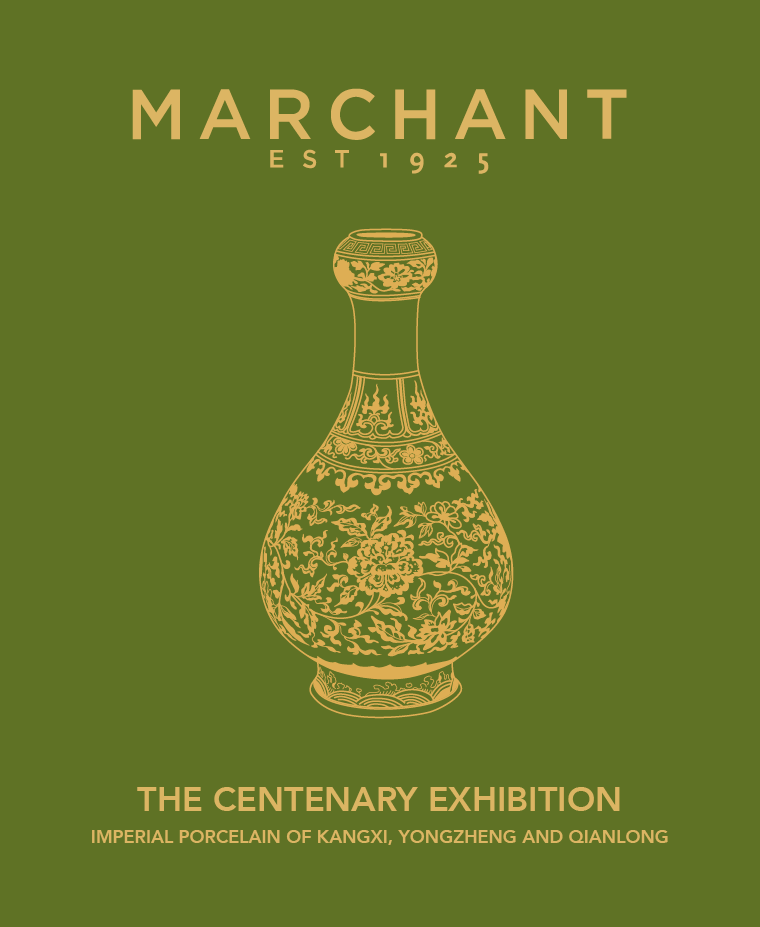The Centenary Exhibition: Imperial Porcelain of Kangxi, Yongzheng and Qianlong
£180
Description
Marchant are delighted to present Imperial Porcelain of Kangxi, Yongzheng and Qianlong, an exhibition commemorating their Centenary year, with a specialty subject of Marchant, an exhibition comprising thirty exceptional works of Qing dynasty porcelain, curated to showcase the extraordinary technical brilliance and artistic refinement achieved at the imperial kilns of Jingdezhen between 1662 and 1795.
This landmark exhibition celebrates the legacy of three of China’s most visionary emperors—Kangxi, Yongzheng, and Qianlong—and the unparalleled porcelain produced under their reigns. Spanning the late 17th to 18th centuries, the works represent a golden age of imperial production that reflects a conscious revival of Ming traditions, as well as an ambitious time of innovation and artistic evolution.
Legacy and Provenance:
This exhibition continues Marchant’s nearly century-long dedication to Qing imperial porcelain. It follows an exhibition of the same title in 1996 and builds on decades of scholarship, connoisseurship, and collecting—highlighted by several pieces not seen on the market since the 1960s. Four highlights were included in Richard Marchant’s landmark 1976 lecture to the Oriental Ceramic Society of Hong Kong.
Since the company’s founding in 1925 by Samuel Sidney Marchant, Qing imperial porcelain has been a defining passion, particularly championed by Richard Marchant in the 1960s. At a time when these pieces were underappreciated in comparison to their Ming counterparts, his admiration helped cultivate an international appreciation that continues to this day.
Highlights include:
No. 5: An extremely rare blue and white bell-shaped vase, Kangxi mark and period, decorated with gankyil medallions symbolising the emperor’s support for Tibetan Buddhism, this vase is considered a prototype for later yaolingzhun forms.
No. 18: The exhibition cover-piece. A blue and white suantou kou ping bottle vase with seasonal blooms, Yongzheng mark and period. One of only three recorded examples, this vase is a direct homage to early Ming floral decoration with “heaped and piled” cobalt.
No. 22: Lemon-yellow ground stem bowl, Qianlong mark and period, painted with the ‘Three Abundances’, this sophisticated work in yellow, blue and green glaze comes from the renowned collection of Russell Tyson and was formerly in the Art Institute of Chicago.
Publication:
A fully illustrated limited edition exhibition catalogue accompanies the show, featuring detailed entries on all thirty pieces, with historical references and provenance.
27th October – 7th November 2025
Monday – Friday: 10.30-17.30
Saturday 1st November: 11.00-20.00
Sunday 2nd November: By Appointment







